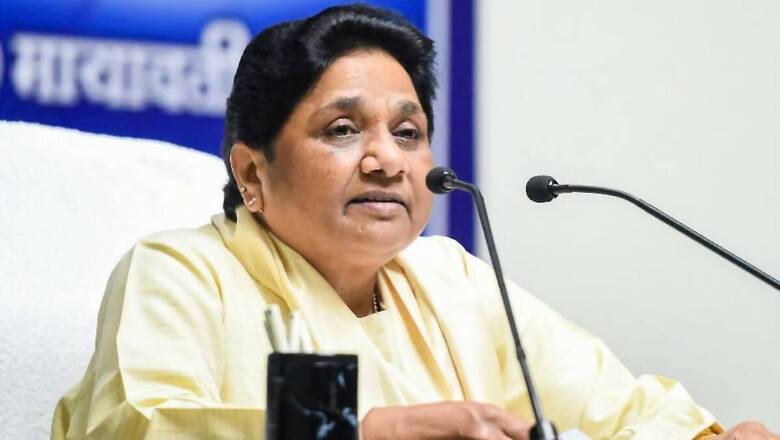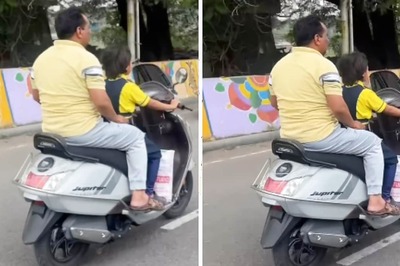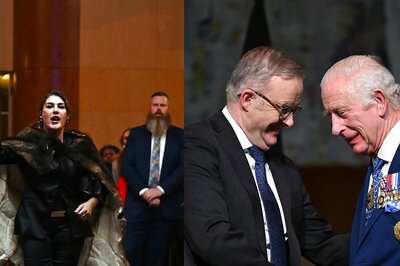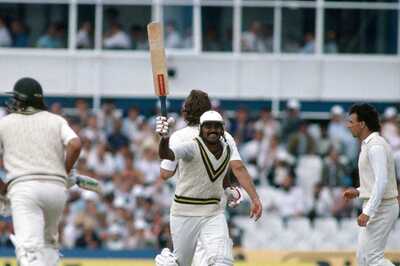
views
You may have heard that during India’s First War of Independence in 1857, the British confiscated the land of Jatavs who participated in the movement. These Jatavs had huge tracts of land, some more than 100 bigha. The Jatavs living in and around the cantonment of eastern UP were mostly employed as caretakers of horses that belonged to the British. In return, they received land grants.
We often talk about how Indira Gandhi’s son Rajiv (who also went on to become the PM like his mother) got educated at the famous Doon School. But do we know that Britishers made a Jaiswar (part of the Jatav social group) of Ghazipur a trustee of the Doon School? There is a provision for reservation for the trustee’s family members to get admission to the Doon School.
My reason for sharing these historical examples is to challenge the general perception around Jatavs, a Dalit community.
Education and Empowerment
Swami Achutanand, founder of the Adi-Hindu movement in North India, inspired Jatavs to get educated even before Babasaheb Ambedkar’s call. He started working in the villages of Uttar Pradesh in 1920s. To his followers, most of whom were Jatavs, he said—save two bowls of rice every day; consume one bowl and use the second for your child’s education. He established libraries for Dalits in various parts of Uttar Pradesh and also founded a printing press to publish Dalit literature.
ALSO READ | UP Next: Some Invisible Scheduled Castes are Finally Getting Visibility, Through BJP Govt Policies
During the colonial period, Arya Samaj also worked among Dalits to spread awareness about the importance of education. Jatavs were relatively better off financially compared to other Dalit communities. Further, the emergence of an educated class among Jatavs, even in pre-independence India, prepared them better to claim the benefits of state policies on education and reservation compared to other Dalit groups. As a result, the Jatav community saw many of its young members cracking the Civil Services exams in post-Independence India.
The Jatavs who made money from the leather trade during the First and the Second World War aggressively supported caste-based identity mobilization, backed caste and religious associations as well as other socio- political activities. This same section also supported Swami Achutanand and his Adi-Hindu movement and later the Republican Party of India.
Local Leadership Emerges
Another important historical event that shaped Jatavs’ political journey was the Nara-Maveshi Movement which started just after Independence in the villages of Uttar Pradesh. Jatavs and some other Dalit groups refused to remove animal carcasses; Dalit women said they will not umbilical cords of newborns, another caste-based occupation. Between 1950 and 1980, the movement had spread across Uttar Pradesh.
In retaliation, the Jatavs had to suffer oppression unleashed by various non-Jatav dominant upper castes and OBCs. The Jatavs with the help of progressive, anti-untouchability laws in the Indian Constitution and a section of pro-reform administration fought the oppressive tactics and won the freedom to take up an occupation of their choice. In this process, a local-level leadership emerged among the Jatav community across various villages of Uttar Pradesh.
When Kanshiram started laying the foundation of his Bahujan politics in Uttar Pradesh, these rural leaders in villages formed the base of the Bajuhan movement in the state. In my book The Making of the Dalit Public in North India, I have documented this entire process of how Bahujan politics came into being in North India.
A Share in Power Politics
Kanshiram realized the importance of Jatavs in Uttar Pradesh, who are not only the largest Dalit community in the state but are also educated, have a local-level leadership and want dignity and a share in power and politics. He often said that in UP, Jatavs are the most-educated community after Brahmins, and the educated Jatav youth will form the cadre of the Bahujan movement. And, he was not off the mark.
Before Kanshiram-led Bahujan movement, the Republican Party of India had emerged as a Dalit-dominant political group, mostly active in western and central parts of Uttar Pradesh in 1960s and 1970s. But its electoral base got fragmented and was slowly swallowed by the Congress.
ALSO READ | With Mayawati Missing in Action, It is Crunch Time for Dalit Politics in Uttar Pradesh
Post-independence and until the emergence of the Bahujan Samaj Party (BSP), a large section of the Jatav community supported the Congress. Babu Jagjivan Ram was considered an icon among Jatavs in UP. But when the Bahujan Samaj Party emerged, the Jatavs saw a possibility to acquire a major share of power and shifted towards the party.
It is true that the BSP is decaying, but its base among the Jatav community is not fragmented, yet. A section of the educated urban and the rural poor who have benefitted from the various welfare and support schemes launched by the BJP government in last few years may have moved towards the BJP. But based on my field observations, I find that despite the disillusionment among Jatavs about the BSP’s future and their criticism of Mayawati, most Jatavs are still in the electoral fold of the BSP.
For the BSP, the 2022 elections are a do-or-die battle. If the party fails to prove its winnability credentials again, it will definitely lead to a deep division in the Jatav votes. But if the Mayawati-led BSP can succeed in raising the hopes of its biggest support base, more Jatavs may back her again in 2024.
Read all the Latest News, Breaking News and Coronavirus News here.




















Comments
0 comment